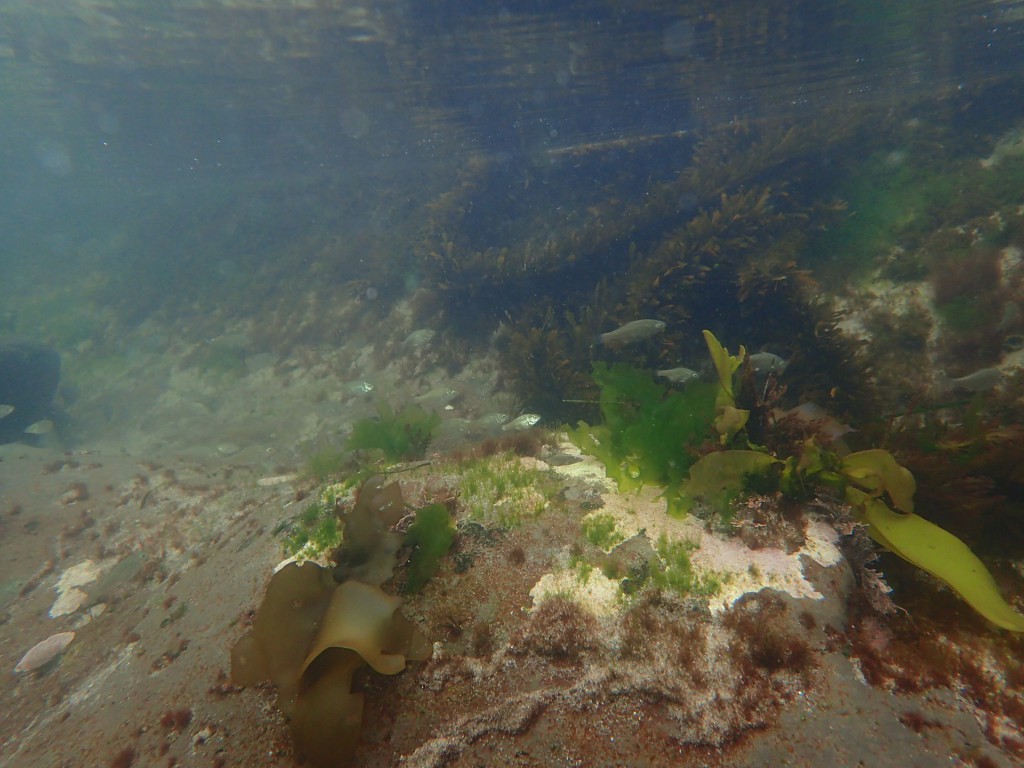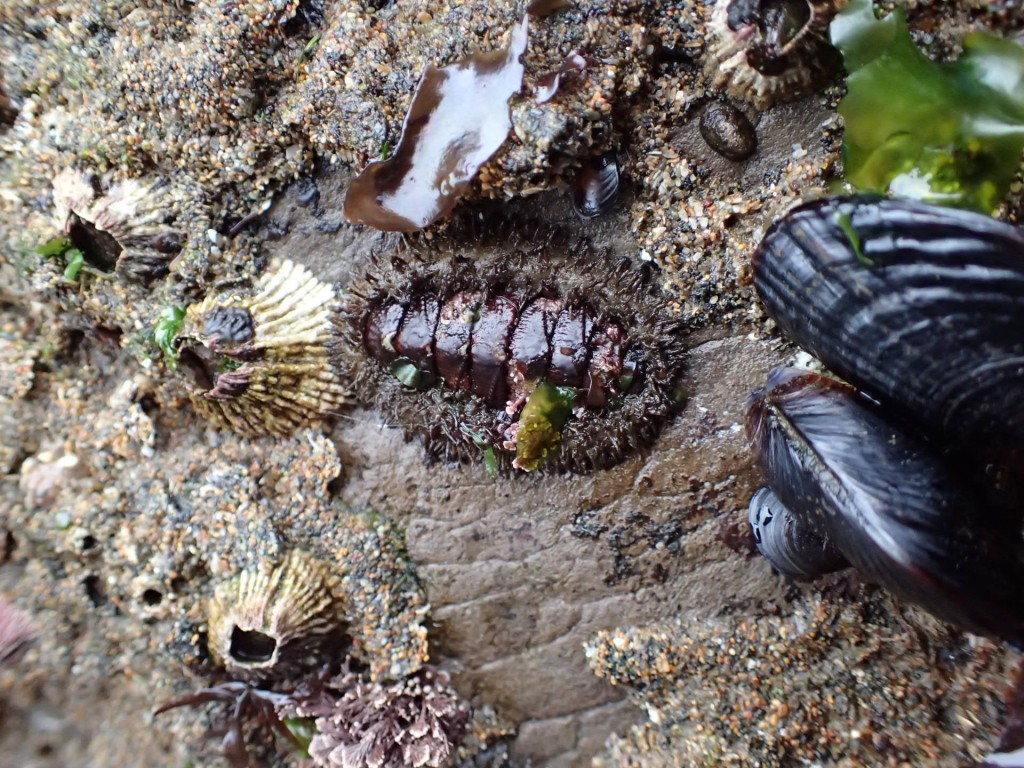In defiance of post-nasal drip and an ominous tickle at the back of my throat, I got up early again this morning and went out on the low tide. I skipped yesterday’s low tide in favor of getting a little more sleep, thinking that it would help me fight off this incipient summer cold, but I didn’t want to miss two of the three intertidal trips I had planned for this weekend. So I made the quick drive up to Davenport Landing, where low tide was at 06:4o.
The first thing I noticed when I got down to the beach was that the algae have started piling up. There were drifts that I sank into almost knee-deep. Fortunately they hadn’t really started decomposing yet, so the smell wasn’t too bad. That will change if it stays warm and the high tides don’t wash any of the algal detritus back out to sea.

© Allison J. Gong
It’s treacherous stuff, that algal duff. It covers up deep holes and slippery rocks, so each footstep becomes an adventure. Because it has been so warm I had considered going out in shorts and surf booties, but more than once this morning I was glad to be wearing my hip boots.
It was a busy day for nemertean worms. Nemerteans are unsegmented, slimy, predatory worms that feed by shooting out a proboscis and wrapping it around prey. In some nemerteans the proboscis is armed with a stylet that injects toxins to help immobilize prey, which are often small polychaete (segmented) worms. Nemerteans are not uncommon, but are often inconspicuous and easily overlooked. None of the ones that I saw today were actively hunting.
As you can see, the body of this worm is not segmented. However, it has the same body wall musculature that you’d find in the polychaetes, which are the segmented marine worms. It uses the muscles to alternately contract and elongate the body and move forward. In most nemerteans neither the head nor the tail end is particularly distinguishable, but in worms you can usually tell the anterior (head) end by the direction of locomotion. Here’s a video:
Continuing to play with the ‘microscope’ setting on my camera, I took this picture of a chiton (Mopalia muscosa):
I’m still learning how to make that compromise between super-macro and depth of field on this setting. The chiton in the above photo is about 4 cm long so I wasn’t zoomed in terribly far, and I like how it is in focus but some of the other critters are as well.
On the reef to the north of Davenport Landing beach there’s a large pool that gets to a bit more than knee deep on me, and is cut off from the ocean during low tide. This pool has proven to be a great place to practice my underwater picture taking. The past couple of times I’ve come out here I’ve seen schools of surfperches swimming in this pool. The school contains large individuals (about as long as my hand) and smaller ones that I think are the babies of the big ones. I haven’t been able to catch one–for some reason I’ve never included a dipnet in my collecting gear, preferring to catch sculpins with my hands–but I think they are shiner surfperches (Cymatogaster aggregata).
Before trying to photograph the fishes underwater, I shot some video from above:
It turns out that photographing fish underwater isn’t as easy as I thought it might be. Surfperches are pretty skittish and I couldn’t get as close to them as I wanted. However if I stood still for a minute or so they forgot about me and would resume their normal behavior. In the meantime I did sort-of-accidentally take some cool pictures of the pool from below the surface.
And finally, fish!

© Allison J. Gong
Last, but certainly not least, in this same large pool I found several anemones. The most brightly colored are the Anthopleura artemisia. I love how their tentacles can be such a vibrant translucent orange or purple, or the oral disc can have that deep saturated red color.
Hard to believe that these animals are the same species, isn’t it? Then again, to an alien scientist studying humans it might be hard to believe that a Viking, an Australian aboriginal and I (an Asian-American) are the same species. It’s all simply a matter of perspective.






